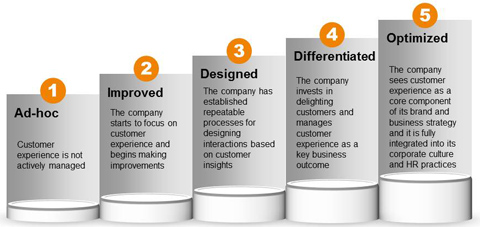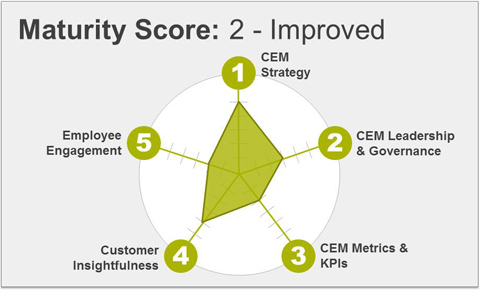The Amdocs Improvement Movement: CEM Maturity Model
How the model works
Based on those five domains, organizations are given a multiple-choice questionnaire that addresses various CX capabilities and challenges. This self-assessment test, which includes the following sample question, allows service providers to rate their CEM maturity level:
Employee engagement/CEM recognition: To what degree does your company celebrate good customer experience?
(0) We do not have any formal incentives for good customer experience.
(1) We have incentives for front-line employees based on customer feedback, but they are small compared with productivity and sales incentives.
(2) We have incentives for front-line employees based on customer feedback that are comparable with productivity and sales incentives.
(3) We have incentives for front-line employees (and distribution partners) based on customer feedback that are comparable with productivity and sales incentives and a company-wide CEM incentive program.
(4) We have a formal awards program that is focused on recognizing all employees (and distribution partners) that enable or deliver good customer experience.

The road map to CEM Nirvana
By now it’s clear that one size does not fit all. So how does the CEM Maturity Model help service providers with their own unique challenges? The results of the self-assessment test identify which of the five domains and which capabilities within those domains present the most opportunities for improvement.
Having this information empowers providers to design a clear CEM improvement road map and turn their existing strengths into key competitive differentiators.




















